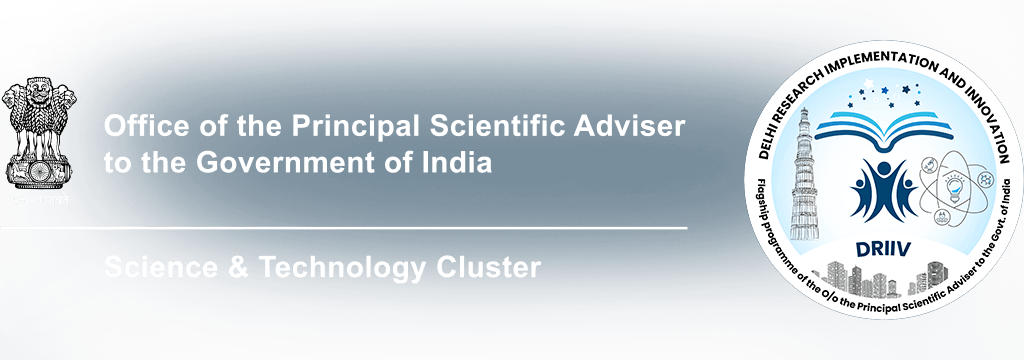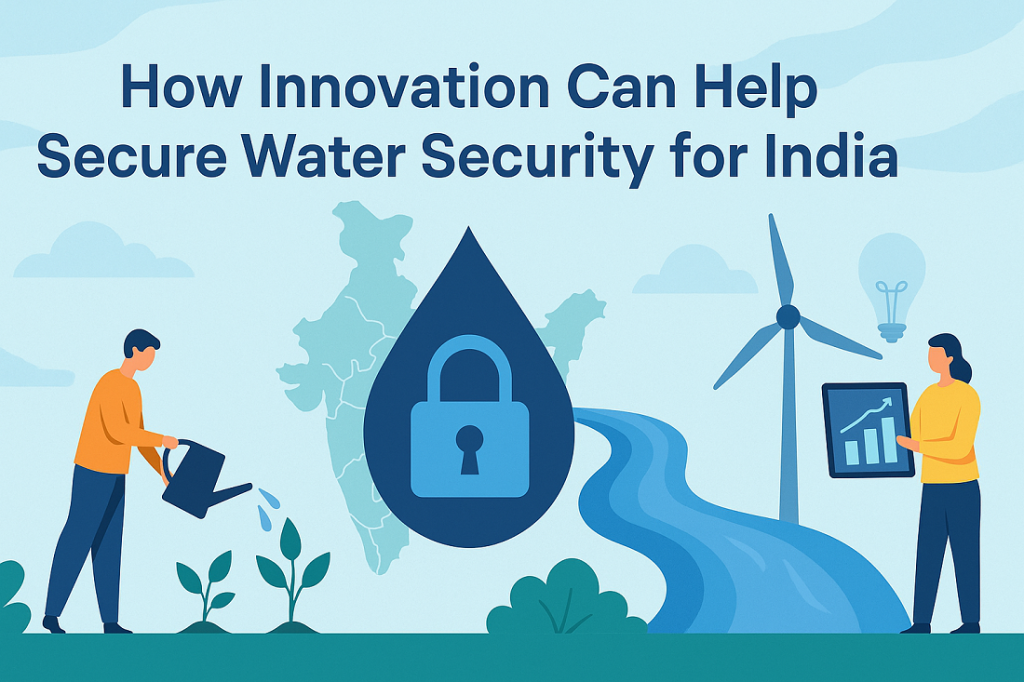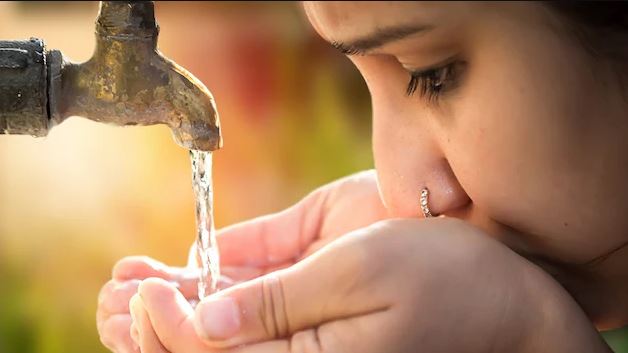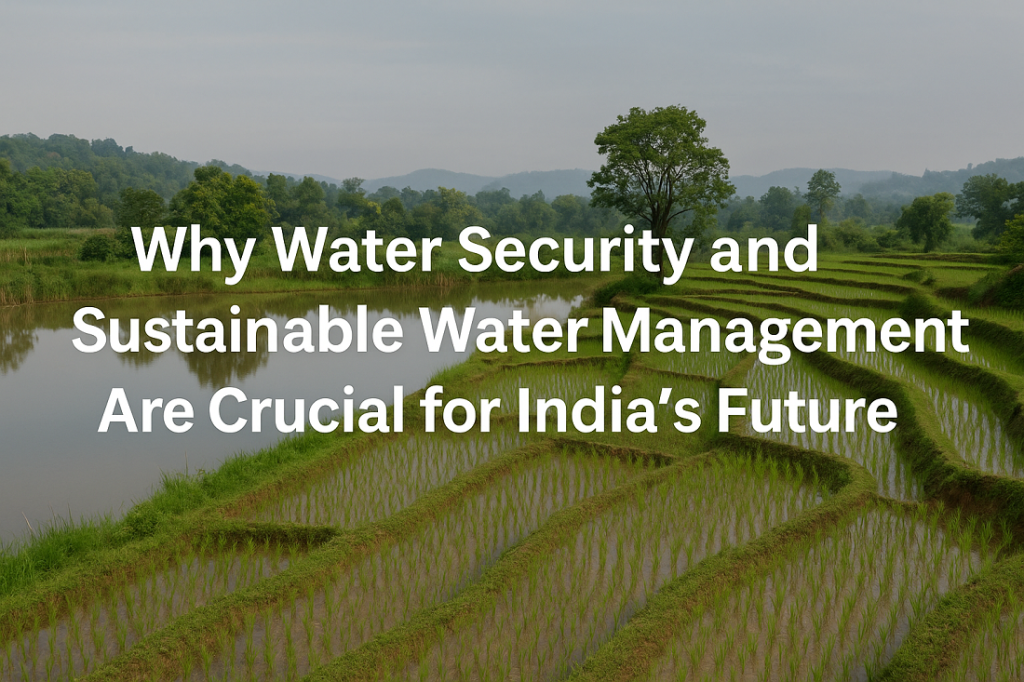Introduction
India, with over 1.4 billion people, faces a growing crisis: water security. Rapid population growth, urbanization, climate change, and pollution have put immense pressure on the country’s water resources. Today, many parts of India face droughts, water shortages, and contaminated water supplies.
But there is hope. Innovation in technology, policy, and community practices can transform how India manages its water. By adopting new ideas and solutions, India can ensure water security for future generations.
At DRIIV, we believe that science, technology, and smart collaborations are the keys to building a water-secure India. Let’s explore how innovation can lead to water conservation, the control of water pollution, and overall water security in India.
What is Water Security?
Water security means having enough clean and safe water for drinking, farming, industry, and ecosystems—now and in the future. It also means protecting water sources from pollution, overuse, and climate impacts.
For India, achieving water security involves:
- Ensuring safe drinking water for all citizens
- Supporting agriculture with reliable irrigation
- Keeping rivers, lakes, and groundwater free from pollution
- Managing floods and droughts effectively
Why is Water Security Important for India?
India’s water demand is growing, but its supply is shrinking. According to government data:
- 70% of India’s surface water is polluted
- Around 600 million people face water stress
- 21 Indian cities may run out of groundwater soon
Water security in India is not just an environmental issue. It affects:
Public health: Poor water leads to diseases like cholera and diarrhea.
Agriculture: Farmers struggle when rainfall is low or unpredictable.
Economy: Industries need water to function.
Social stability: Water scarcity can lead to conflicts and migration.
How Innovation Can Solve India’s Water Challenges
Innovation is the engine that drives change. By using new technologies, creative policies, and local solutions, India can ensure water security in smart and sustainable ways.
Let’s explore the key areas where innovation is making a difference.
1. Smart Water Management Systems
Modern technology allows us to track, measure, and manage water better than ever.
- IoT-based sensors monitor water levels in reservoirs, lakes, and groundwater in real time.
- AI and data analytics help predict droughts, floods, and water shortages.
- Smart meters track household water usage and reduce wastage.
These tools enable efficient planning and reduce water loss in cities and villages.
2. Phycoremediation and Bio-Technologies
Control of water pollution is essential for ensuring clean water.
Innovations like phycoremediation use algae to clean polluted water from lakes and drains. These natural systems:
Other bio-technologies use bacteria and plants to treat sewage without chemicals. These are eco-friendly and cost-effective solutions for rural and urban areas.
3. Wastewater Recycling and Reuse
India produces more than 60 billion liters of wastewater daily. Most of it goes untreated into rivers and lakes.
Innovative treatment plants now allow us to:
- Recycle sewage water for irrigation, cooling, and industrial use
- Harvest greywater from homes for toilets and gardening
Reusing water can reduce pressure on freshwater sources and improve water conservation efforts.
4. Rooftop Rainwater Harvesting
Rainwater is a free and clean source of water—if we capture it.
Cities like Chennai and Bengaluru have shown how rooftop rainwater harvesting can recharge groundwater and reduce urban flooding.
Innovation lies in:
- Designing easy-to-install rainwater systems
- Using GIS tools to map water catchment areas
- Training communities in simple techniques
5. Decentralized Water Solutions for Rural Areas
Many rural communities in India still depend on unsafe or distant water sources.
Innovative solutions include:
- Solar-powered water pumps to draw groundwater
- Mobile water purification units for villages
- Community-led water governance using digital tools
These approaches ensure local control and improve water security at the grassroots level.
6. Satellite and Drone Monitoring
India’s remote sensing programs and private drone startups are changing how we map and manage water.
- Satellites can detect changes in groundwater levels
- Drones can survey lakes, check pollution levels, and spot illegal water extraction
This data helps government agencies and researchers plan better policies for water conservation and management.
7. Digital Platforms and Awareness Campaigns
Public participation is key to sustainable water use. Digital tools are helping spread awareness about:
- Water-saving tips for households
- Early warnings about water contamination
- Real-time updates on water availability
Apps and websites are connecting citizens, researchers, and officials in one ecosystem. These platforms promote transparency and accountability in water governance.
8. New Materials and Infrastructure
Innovative building materials can reduce water use and wastage. Examples include:
- Permeable pavements that let rainwater soak into the ground
- Low-flow taps and toilets that save water
- Leak-proof piping systems that cut water losses
Modern infrastructure, designed with sustainability in mind, can greatly improve water security in India.
9. Agriculture Innovations
Farming uses about 80% of India’s freshwater. So, innovations in agriculture are crucial for water conservation.
- Drip and sprinkler irrigation reduce water use by 30–70%
- Water-efficient crop varieties grow with less irrigation
- Soil moisture sensors help farmers decide when to water
Government schemes like PM-KUSUM also promote solar irrigation pumps that save water and energy.
10. Policy and Institutional Innovations
Innovative laws and governance models are just as important as technologies.
- Jal Shakti Abhiyan focuses on rainwater harvesting and watershed development
- Namami Gange Mission works to clean the Ganga River using science and innovation
- Atal Bhujal Yojana encourages community participation in groundwater management
When backed by data and citizen involvement, these policies make a real impact on water security.
How DRIIV is Supporting Water Innovation
At DRIIV, we are proud to be part of India’s journey toward sustainable water solutions. As a Science and Technology Cluster, we work with academic institutions, startups, government bodies, and communities to:
- Promote wastewater treatment using algae (phycoremediation)
- Develop scalable models for rainwater harvesting
- Support the use of AI and sensors for water monitoring
- Bridge gaps between research and real-world application
We believe in Science for Sustainability, where every innovation supports people, planet, and progress.
Conclusion
Securing water security in India is not just a challenge—it’s a responsibility we all share. Innovation gives us the tools to rethink, reduce, recycle, and rejuvenate our water resources.
By combining traditional wisdom with cutting-edge science, we can achieve:
Clean and safe drinking water for all
Efficient water use in farming and industry
Pollution-free rivers and lakes
Resilient communities prepared for climate change
Let’s support innovation, raise awareness, and take action—because water security is the foundation of a healthy, sustainable, and Viksit Bharat (Developed India).
FAQs
1. What is water security in India?
Water security in India means having reliable access to clean, safe water for drinking, farming, and other uses, while protecting water sources from pollution and overuse.
2. How can innovation help improve water conservation?
Innovation helps with water conservation through:
- Smart irrigation techniques
- Recycled water systems
- AI-based water usage monitoring
- Community education tools
3. What is the role of DRIIV in water security?
DRIIV works to connect science and innovation with real-life problems. In water security, we:
- Support research in phycoremediation
- Promote digital water tracking
- Help scale eco-friendly technologies
4. How can we control water pollution through innovation?
Innovations like phycoremediation, bio-treatment plants, and sensor-based monitoring can detect and clean polluted water faster and more effectively than traditional methods.
5. What is rainwater harvesting and how does it help?
Rainwater harvesting is collecting and storing rain from rooftops or other surfaces. It helps recharge groundwater and reduces reliance on external water sources.
6. What are the main challenges to water security in India?
- Uneven rainfall
- Polluted rivers
- Over-extraction of groundwater
- Lack of efficient infrastructure
- Poor waste management
7. What can individuals do to support water security?
- Fix leaks in taps and pipes
- Reuse water where possible
- Use water-efficient appliances
- Join or support community water conservation programs




